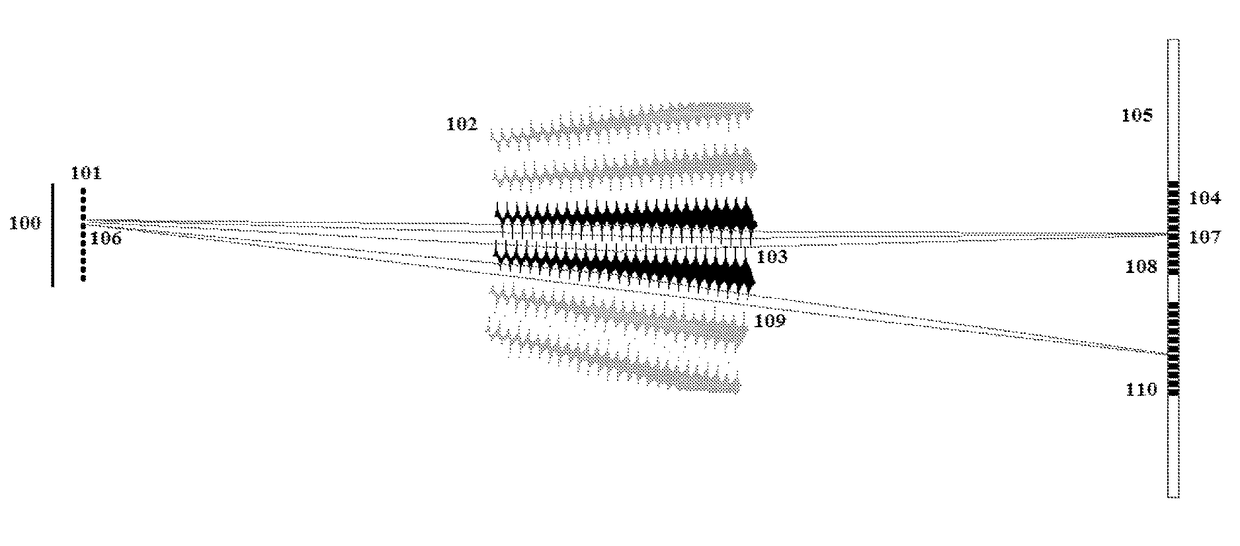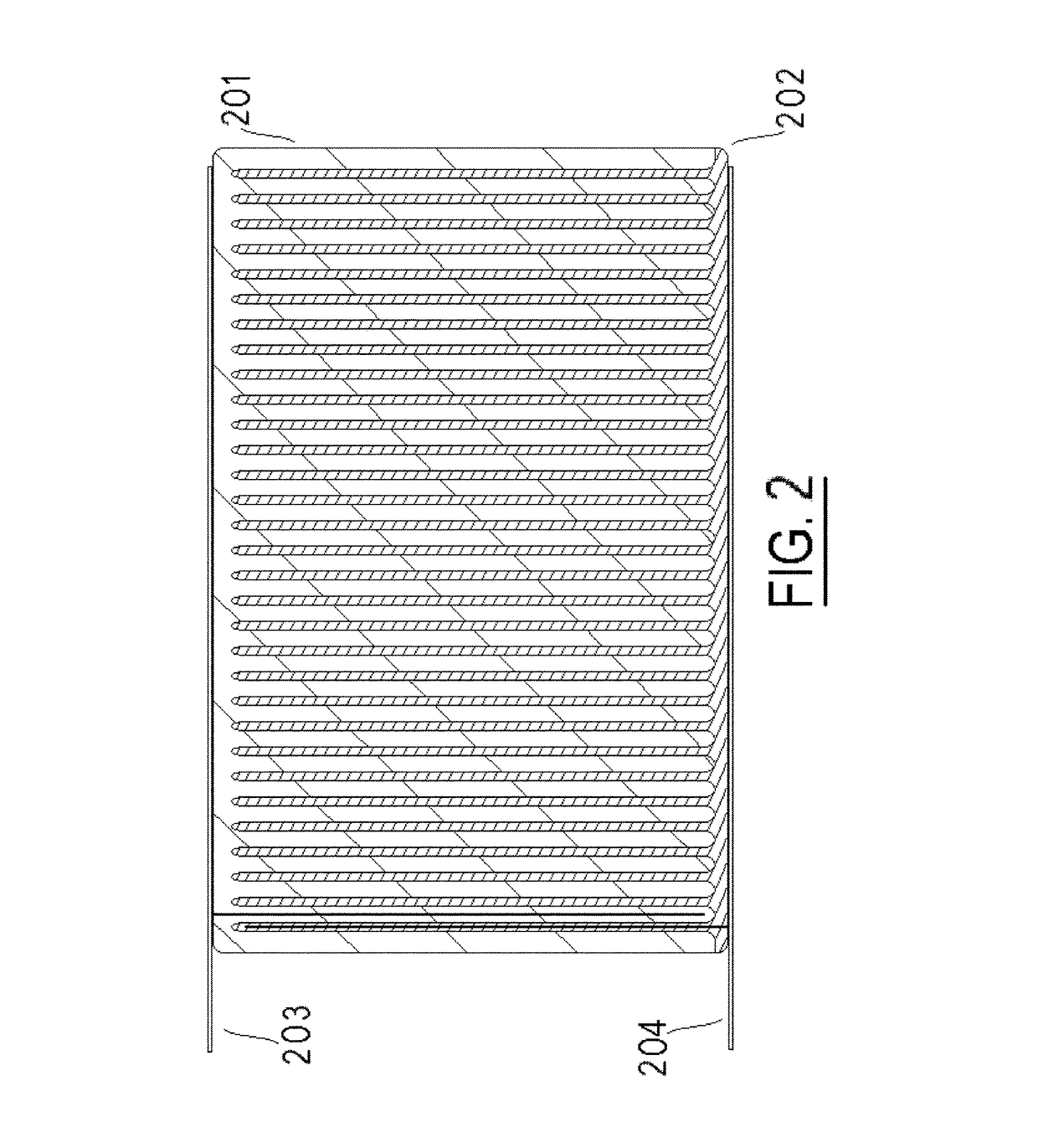Semiconductor and other materials by thermal neutron transmutation
a technology of semiconductors and other materials, applied in the field of semiconductor device manufacturing, can solve the problems of high cost of photovoltaic modules, and high cost of silicon wafer starting silicon wafers
- Summary
- Abstract
- Description
- Claims
- Application Information
AI Technical Summary
Benefits of technology
Problems solved by technology
Method used
Image
Examples
Embodiment Construction
General Aspects
[0043]FIG. 1, is a schematic diagram of a manufacturing apparatus according to one embodiment of the disclosed invention, shown in the “side view,” having an exit surface of a neutron moderating material 100 as a source of thermal neutrons, a primary periodic one-dimensional (1-D) absorption mask 101 for spatially modulating transmitted intensity, and in the same orientation as the mask / grid, an array of focusing optics 102, such as an array of compound refractive neutron lenses. Portions of the primary mask-modulated field of thermal neutron-radiation are captured and focused by an individual optic 103 in the array 102 such that a striped pattern 104 is formed at the semiconductor material 105. As shown, the lens array consists of extruded ribbons of low-Z material with each major surface of each ribbon sculpted as to form a half-lens. Again as shown, the diameter of individual lens elements increases in size from one edge of the ribbon to the other. When assembled p...
PUM
| Property | Measurement | Unit |
|---|---|---|
| elemental composition | aaaaa | aaaaa |
| doping concentration | aaaaa | aaaaa |
| thickness | aaaaa | aaaaa |
Abstract
Description
Claims
Application Information
 Login to View More
Login to View More - R&D
- Intellectual Property
- Life Sciences
- Materials
- Tech Scout
- Unparalleled Data Quality
- Higher Quality Content
- 60% Fewer Hallucinations
Browse by: Latest US Patents, China's latest patents, Technical Efficacy Thesaurus, Application Domain, Technology Topic, Popular Technical Reports.
© 2025 PatSnap. All rights reserved.Legal|Privacy policy|Modern Slavery Act Transparency Statement|Sitemap|About US| Contact US: help@patsnap.com



